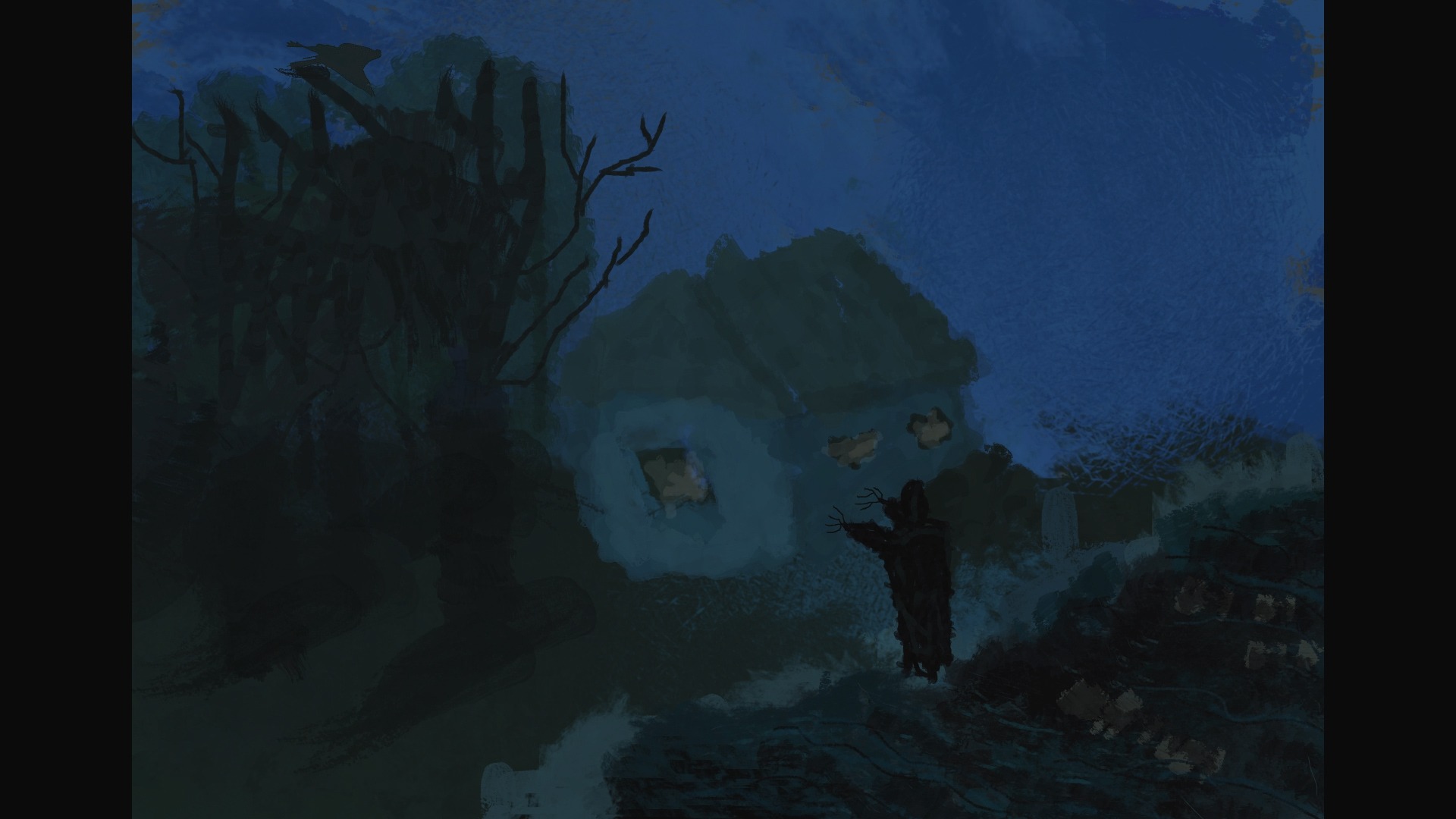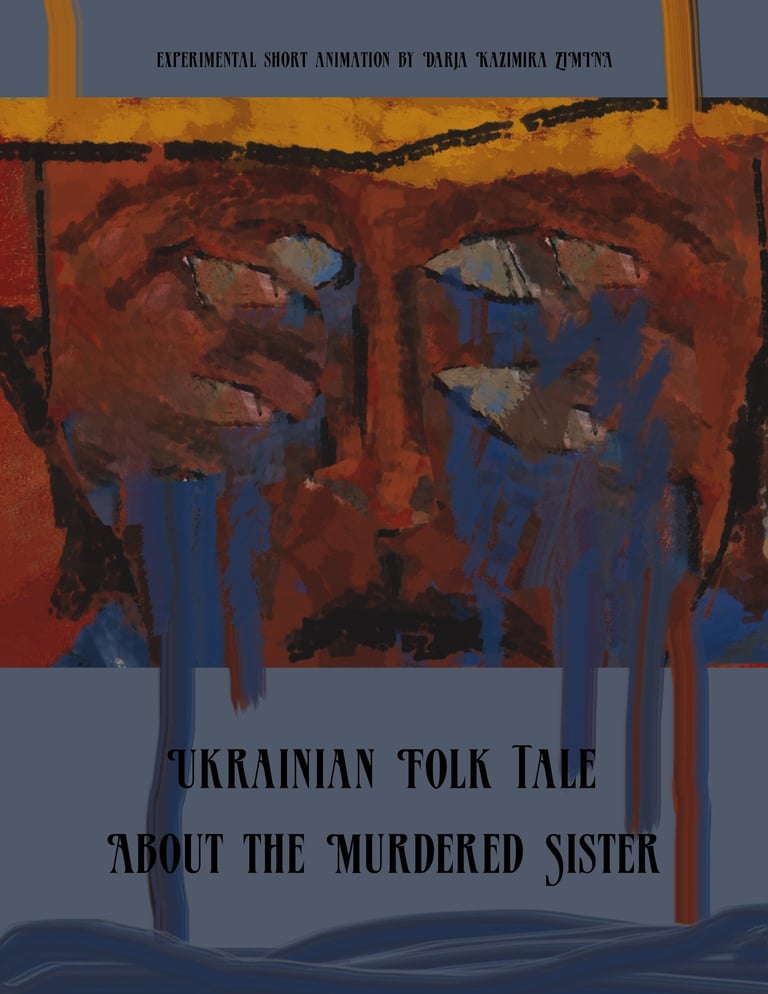
Ukrainian Folk Tale About the Murdered Sister
(experimental short animation by Darja Kazimira)
The material of this Ukrainian fairy tale tells about the mythological image of the blind old lyre player and his relationship with the underworld. This is a stable symbol and an exclusively original phenomenon in Ukrainian culture, which has a common terminological designation "kobzar". The kobzars were documented in Ukraine for the first time in the 15th century. However, in fact, kobzarism can be divided into two types of ideological manifestation, and therefore two chronological segments: heroic (which arose in Cossack circles in the 15th century) and religious (formed most likely in the early Middle Ages). It was the second group of musicians who were predominantly blind and had a direct relationship to the deep mythological images of antiquity, to some extent intersecting with the tradition of the Aoidos (Greek blind singers). Do not forget that the sacralization of blindness in the musical and poetic community was widespread in other countries of Eastern and Northern Europe. But this phenomenon was so massive, socially, spiritually, and politically significant only in Ukraine.
About creating the image of a blind lyre player
The image of the "lyrnik" was inspired by my grandfather Anatoly, a Ukrainian composer who devoted his life to the study and musical adoption of the Ukrainian folklor. He supervised several ensembles engaged in the performance of instrumental and vocal material. Anatoly also tried to preserve the traditions of his people by reconstructing authentic Ukrainian holidays and their ritual attributes, creating a whole public initiative in the village of Podluby, where he lived and also with his wife engaged in educational activities.
Due to the fact that at that time the territory of Ukraine was part of the USSR, as well as in its other territories, research ethnographic activity was subordinated to the ideological guidelines of the ruling power, authentic materials were subjected to distortion, rewriting, and sometimes destruction. Therefore, Anatoly's activities could not receive the wide publicity and recognition that he sincerely dreamed of. This factor led him to a deep internal crisis, which ended in suicide. Anatoly hanged himself, and the materials he collected did not find a person willing to become their initiative keeper and eventually turned out to be lost or destroyed.





